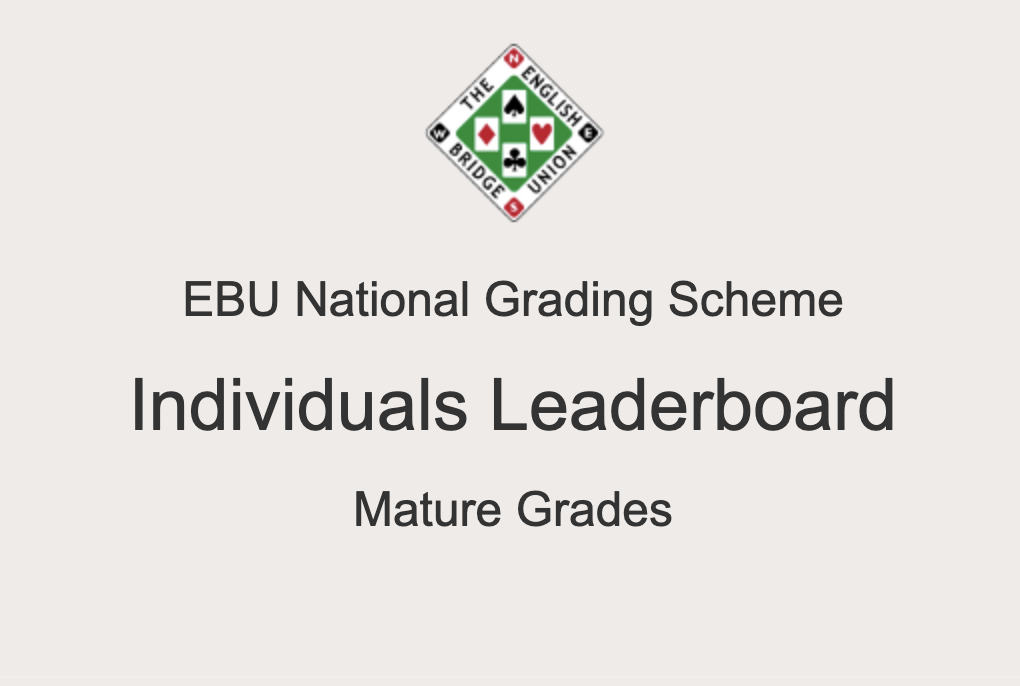The English Bridge Union (EBU) considers the National Grading System “a fair and trustworthy measure of an individual’s current performance” at bridge. Here’s everything bridge players should know about the introduction and use of the NGS – including how bots are ranked as competitors alongside human players.
The EBU’s National Grading System (NGS) – How It’s Different From ACBL Master Points

The English Bridge Union (EBU) considers the National Grading System “a fair and trustworthy measure of an individual’s current performance” at bridge. Here’s everything bridge players should know about the introduction and use of the NGS – including how bots are ranked as competitors alongside human players.
What is the NGS?
The NGS is a bridge player rankings system at its core.
Official EBU documentation mentions that these points are meant to be complementary to Master Points although they stand as a separate system.
According to the Very Brief Intro, it measures “an individual’s current playing ability based on the last 80 or so playing sessions at whatever level they play.”
- Rankings are divided into Mature or Evolving depending on grade
- Points are awarded for selected EBU events
- Rankings include both Individual and Partnership grades
- Bots are competitors
It’s like Master Points, but a little different.
Within the Yu-Gi-Oh! Universe, it would almost be like transferring to another Duel Academy – one where the game is the same, but the grading is a little different.
It would appear that the NGS are to Master Points exactly what any other ranking system might be: Some players have earned ABA points in addition to their ACBL Master Points for years.
What’s with the Bots?
Scroll to the current list of Individual rankings for Mature players according to the EBU’s NGS (found at this link) and you’ll see the current top three surrounded by other championship players according to their rankings.
For now, the top three spots are bridge players Mike Pownall, Adrian Orlowski and Mike Elliott.
It’s the second column that might turn heads: #26 on the list is Basic BBO Bot A.
The BBO Bots are ranked alongside human players; this doesn’t mean that bots are “competing” in the ranking as much as there as a measure of each bot’s “difficulty level.”
Remember when video games made you choose the difficulty level at the start of the game? Having robots ranked on the NGS is a lot like that. For consistency, players can use the ranking to seek out their appropriate bot level.
ers should know about the introduction and use of the NGS – including how bots are ranked as competitors alongside human players.
For Easy Reading
Prefer to proceed to the links? Here’s the essential reading list from the EBU website.
- EBU: National Grading System Rankings
- NGS: Very Brief Intro
https://www.ebu.co.uk/documents/miscellaneous/ngs/very-brief-intro.pdf
- NGS: Full Guide
https://www.ebu.co.uk/documents/miscellaneous/ngs/full-guide.pdf
- NGS: Procedural Guide
https://www.ebu.co.uk/documents/miscellaneous/ngs/procedural-guide.pdf
Further Reading: 2018 Changes to the NGS
To ensure fairness over a variety of player skill levels, the EBU brought in changes to the NGS in 2018.
- When advanced (or Mature) players are partnered up with ones that have played under 150 boards, the Mature ranking won’t be affected while the novice player can see their ranking increase.
- Rankings are published when a player reaches 150 boards; previously, this was set at double this.
A detailed outline of the changes can be found at this page for NGS 2018 Changes (EBU).








